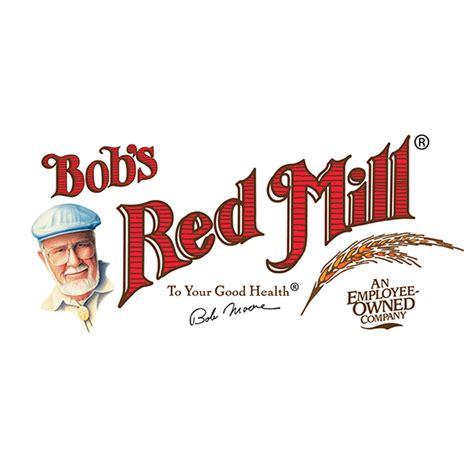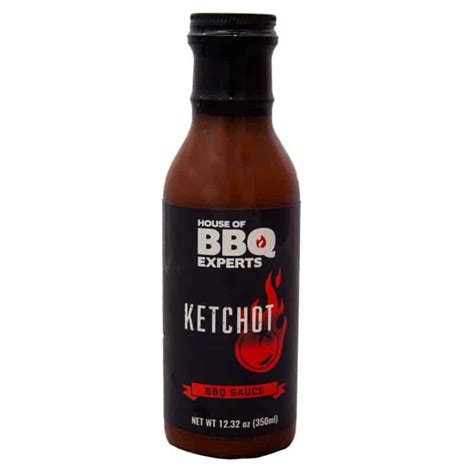
Using too much laundry detergent is a common mistake that not only wastes money but can also damage your washing machine and leave clothes dirtier than before, experts say. Many consumers significantly overestimate the amount of detergent needed, leading to residue buildup, ineffective cleaning, and potential machine malfunctions.
Less Is More: The Shocking Truth About Laundry Detergent Dosage
Most people are using far more laundry detergent than necessary, a practice that’s costing them money and potentially harming their clothes and washing machines, according to laundry experts and appliance repair technicians. The pervasive misconception that more detergent equals cleaner clothes is leading to widespread overuse, resulting in a host of negative consequences.
“People think that more detergent means cleaner clothes, but it’s actually the opposite,” says Patric Richardson, host of “The Laundry Guy” on Discovery+. Overusing detergent can leave residue on clothes, making them stiff, attracting more dirt, and even causing skin irritation.
The problem is compounded by unclear instructions on detergent packaging and the varying concentrations of different detergent formulations. What was once a simple chore has become a confusing endeavor for many consumers.
The Problem with Overdosing
One of the primary issues with using too much detergent is that it doesn’t all rinse out during the wash cycle. This excess detergent leaves a residue on clothing fibers, making them feel stiff and attracting dirt. This buildup can also dull colors and make whites appear dingy over time.
Moreover, the excess detergent can accumulate in the washing machine itself. This residue can lead to mold and mildew growth, causing unpleasant odors and potentially damaging the machine’s components. In severe cases, it can clog drain lines and pumps, leading to costly repairs.
According to appliance repair technicians, one of the most common issues they encounter is washing machine malfunction due to excessive detergent buildup. “We see it all the time,” says John Miller, a local appliance repairman. “People are pouring in way too much detergent, and it’s causing all sorts of problems with their machines.”
How Much Detergent Is Enough?
The correct amount of detergent to use depends on several factors, including the size of the load, the level of soil on the clothes, and the hardness of the water. However, as a general rule, less is almost always more.
Most high-efficiency (HE) washing machines require only about two tablespoons of detergent per load. For standard top-loading machines, the amount may be slightly higher, but it’s still significantly less than what many people typically use.
“The key is to start with a small amount and increase it only if necessary,” Richardson advises. “You can always add more detergent if your clothes aren’t coming out clean, but it’s much harder to remove excess detergent once it’s already in the machine.”
Understanding Detergent Types and Concentrations
The concentration of detergent can vary significantly between different brands and formulations. Concentrated detergents, which are becoming increasingly popular, require even smaller amounts than traditional detergents. It is crucial to read the product label carefully and follow the manufacturer’s instructions.
Liquid detergents, powder detergents, and detergent pods all have different dispensing methods and concentrations. Liquid detergents are easy to measure, but it’s also easy to overpour. Powder detergents can be more precise, but they can sometimes leave residue if not dissolved properly. Detergent pods are pre-measured, which can help prevent overuse, but they may not be suitable for all types of washing machines or loads.
The Impact of Water Hardness
Water hardness refers to the amount of minerals, such as calcium and magnesium, present in the water. Hard water can reduce the effectiveness of detergent, requiring slightly more detergent to achieve the same cleaning results. However, even with hard water, it’s still important to avoid overusing detergent.
If you have hard water, you may want to consider using a water softener or adding a laundry booster to your wash. These products can help improve the effectiveness of the detergent and prevent mineral buildup in your washing machine.
The Environmental Impact
Overusing laundry detergent not only affects your wallet and your washing machine but also has environmental consequences. Excess detergent can end up in wastewater treatment plants, where it can contribute to water pollution. Some detergent ingredients, such as phosphates, can promote algae blooms in lakes and rivers, harming aquatic life.
By using less detergent, you can reduce your environmental footprint and help protect our waterways. Choosing eco-friendly detergents made with biodegradable ingredients can further minimize your impact.
Tips for Using Laundry Detergent Effectively
To ensure you’re using the right amount of laundry detergent, consider the following tips:
- Read the label: Always read the detergent label and follow the manufacturer’s instructions. Pay attention to the recommended dosage for different load sizes and soil levels.
- Measure carefully: Use a measuring cup or scoop to accurately measure the detergent. Avoid pouring directly from the bottle, as this can lead to overpouring.
- Consider load size: Adjust the amount of detergent based on the size of the load. A small load requires less detergent than a large load.
- Assess soil level: Heavily soiled clothes may require slightly more detergent, but avoid overdoing it. Pre-treating stains can help reduce the amount of detergent needed.
- Check water hardness: If you have hard water, you may need to use slightly more detergent or add a laundry booster.
- Use HE detergent: If you have a high-efficiency washing machine, be sure to use HE detergent. These detergents are formulated to produce less suds and are safe for use in HE machines.
- Clean your washing machine: Regularly clean your washing machine to remove detergent buildup and prevent odors. Run an empty cycle with hot water and a cup of vinegar or a washing machine cleaner.
The Expert Opinion
“The biggest mistake people make is thinking they need more detergent than they actually do,” says Jolie Kerr, cleaning expert and author of “My Boyfriend Barfed in My Handbag… And Other Things You Can’t Ask Martha.” “In most cases, half the recommended amount is more than enough.”
Kerr emphasizes the importance of observing how your clothes look and feel after washing. If they feel stiff or have a residue, you’re likely using too much detergent. If they’re not coming out clean, you may need to increase the amount slightly.
The Bottom Line
Using less laundry detergent is not only good for your wallet and your washing machine but also for the environment. By following the tips above and paying attention to the signals your clothes are sending, you can ensure you’re using the right amount of detergent and getting the best possible results. The key takeaway is to reassess your laundry habits and challenge the assumption that more detergent equals cleaner clothes. In reality, less is often more when it comes to laundry detergent.
Frequently Asked Questions (FAQs)
-
How much laundry detergent should I really be using?
The amount of laundry detergent needed varies depending on several factors, including load size, soil level, water hardness, and detergent concentration. However, as a general rule, most high-efficiency (HE) washing machines only require about two tablespoons of detergent per load. Standard top-loading machines may require slightly more, but it’s still typically less than what many people use. Always refer to the detergent packaging for specific instructions, and start with a smaller amount, increasing it only if necessary. Patric Richardson, host of “The Laundry Guy,” advises, “The key is to start with a small amount and increase it only if necessary. You can always add more detergent if your clothes aren’t coming out clean, but it’s much harder to remove excess detergent once it’s already in the machine.”
-
What happens if I use too much laundry detergent?
Using too much laundry detergent can lead to several problems. Excess detergent can leave a residue on clothes, making them stiff and attracting more dirt. This buildup can also dull colors and make whites appear dingy. Additionally, excess detergent can accumulate in the washing machine, leading to mold and mildew growth, unpleasant odors, and potential damage to the machine’s components, such as clogged drain lines and pumps. Appliance repair technicians frequently encounter washing machine malfunctions due to excessive detergent buildup.
-
How does water hardness affect the amount of laundry detergent I need?
Water hardness, which refers to the amount of minerals like calcium and magnesium in the water, can affect the effectiveness of laundry detergent. Hard water can reduce the detergent’s cleaning power, potentially requiring slightly more detergent to achieve the same results. However, it’s still crucial to avoid overusing detergent, even with hard water. Consider using a water softener or adding a laundry booster to improve detergent effectiveness and prevent mineral buildup.
-
What are the environmental impacts of using too much laundry detergent?
Overusing laundry detergent has several environmental consequences. Excess detergent can end up in wastewater treatment plants, contributing to water pollution. Some detergent ingredients, like phosphates, can promote algae blooms in lakes and rivers, harming aquatic life. By using less detergent, you can reduce your environmental footprint and help protect waterways. Choosing eco-friendly detergents made with biodegradable ingredients can further minimize your environmental impact.
-
How can I tell if I’m using too much laundry detergent?
Several signs indicate you might be using too much laundry detergent. If your clothes feel stiff, have a soapy residue, or appear dull after washing, you’re likely using too much detergent. Additionally, if you notice a build-up of soap scum in your washing machine or experience unpleasant odors, it could be due to excess detergent. Jolie Kerr, cleaning expert, suggests observing how your clothes look and feel after washing. If they feel stiff or have a residue, reduce the amount of detergent you’re using.
Extended Analysis and Background Information
The revelation that many consumers are overusing laundry detergent is not just a matter of saving money; it’s a confluence of factors related to consumer behavior, marketing strategies, and a lack of clear, consistent information. To fully understand the issue, it’s essential to delve into the history of laundry practices, the evolution of detergent formulations, and the psychological factors that drive overuse.
A Historical Perspective on Laundry
Laundry practices have evolved significantly over time. In the past, washing clothes was a labor-intensive process that involved hand-washing, boiling, and scrubbing. Detergents were simple soaps made from natural ingredients. As technology advanced, washing machines became more common, and detergents became more complex, incorporating enzymes, brighteners, and other additives.
The introduction of automatic washing machines and synthetic detergents in the mid-20th century revolutionized laundry, making it faster and more convenient. However, this also led to a shift in consumer perceptions about cleanliness and the amount of detergent needed. The rise of mass marketing and advertising further influenced these perceptions, often promoting the idea that more detergent equals better cleaning.
The Evolution of Detergent Formulations
Modern laundry detergents are complex chemical formulations designed to remove a wide range of stains and soils. They typically contain surfactants, which help to lift dirt and oil from fabrics; enzymes, which break down protein-based stains like blood and grass; builders, which soften water and enhance detergent performance; brighteners, which make clothes appear whiter and brighter; and fragrances, which provide a pleasant scent.
Over the years, detergent manufacturers have developed increasingly concentrated formulations, designed to deliver more cleaning power with less product. However, this has also created confusion among consumers, who may not realize that they need to use significantly less of a concentrated detergent compared to a traditional detergent. The lack of clear and consistent labeling further exacerbates this problem.
Psychological Factors Driving Overuse
Several psychological factors contribute to the tendency to overuse laundry detergent. One is the “more is better” mentality, which is often reinforced by marketing messages and societal norms. Many consumers believe that using more of a product will automatically lead to better results, even if this is not the case.
Another factor is the desire for reassurance. When it comes to cleaning, people often want to be absolutely sure that their clothes are clean and fresh. Using more detergent may provide a sense of security, even if it’s not actually necessary.
Furthermore, habits and routines play a significant role. Many people have developed ingrained habits of using a certain amount of detergent, often based on outdated recommendations or personal preferences. Breaking these habits can be challenging, especially if people are not aware that they are using too much detergent.
The Role of Marketing and Advertising
Marketing and advertising have played a significant role in shaping consumer perceptions about laundry detergent. Detergent manufacturers often use persuasive advertising techniques to promote their products, emphasizing their cleaning power and effectiveness.
Many detergent commercials depict large amounts of detergent being poured into washing machines, reinforcing the idea that more is better. These commercials may also feature images of spotless, gleaming clothes, creating a subconscious association between detergent use and cleanliness.
While advertising can provide useful information about product features and benefits, it can also contribute to overuse if it promotes unrealistic expectations or encourages consumers to use more detergent than necessary.
The Importance of Education and Awareness
Addressing the issue of laundry detergent overuse requires a multi-faceted approach that includes education, awareness, and clear, consistent communication. Consumers need to be informed about the potential consequences of overuse, including damage to their clothes, washing machines, and the environment.
Detergent manufacturers can play a role by providing clearer and more accurate instructions on their packaging. They can also educate consumers about the benefits of using less detergent and promote responsible usage.
Furthermore, independent organizations and consumer advocacy groups can help to raise awareness about the issue and provide unbiased information to consumers. By working together, we can create a culture of responsible laundry practices that benefits both individuals and the environment.
Long-Term Implications and Future Trends
The trend towards concentrated detergents and eco-friendly formulations is likely to continue in the future, as consumers become more aware of the environmental impact of their choices. However, it’s essential to ensure that these products are clearly labeled and that consumers are properly educated about how to use them effectively.
In the long term, it’s possible that we will see the development of even more advanced laundry technologies, such as washing machines that automatically dispense the correct amount of detergent based on load size, soil level, and water hardness. These technologies could help to eliminate the guesswork and prevent overuse.
Ultimately, the key to reducing laundry detergent overuse is to empower consumers with the knowledge and tools they need to make informed decisions. By promoting responsible laundry practices, we can protect our clothes, our washing machines, and our planet.
![Bob’s Red Mill’s New [Product] Is a Family Favorite: Gone in Days!](https://infoduniaku.com/wp-content/uploads/2025/06/unnamed-file-279-150x150.jpg)








